DCF77 reception interference due to pulse power supply operation
When I noticed for a long time that the watch was out of sync with the DCF receiver, at first I suspected problems with the strength of the DCF77 signal transmitted from German territory. After contacting a ham radio operator who has a similar watch at his operating station, it became clear that the cause must be some local interference or a failure of the watch. I got the hint to try to detect the source of possible interference with a longwave receiver. This was a hoot, the source of the strong interference was the SMPS power supply with which I replaced the faulty unit. The power supply visible in the photo, by the way, replaced several other plug-in power supplies that arrived around the ONT device, switch, router, i.e. the devices that provide internet access in the house. It is a model EA 10850D1 MW Power power supply.
.
The interference generated by the power supply was strong and modulated by the operation of the inverter and also depended on the current drawn from the power supply.
.
I looked through the box of power supplies and through selection using a receiver managed to find a specimen with low levels of radio interference. This is the model GSM36B12 MW MEAN WELL power supply.
.
The interference has a smaller range and is more like a hum than a whirr.
.
The current waveform (blue) at the input of the first PSU reveals that this is a design without active PFC correction. At this power this is not mandatory and with the low price of the product it is not possible. The yellow trace is obviously the mains voltage sine wave.
.
There are "pins" superimposed on the current waveform this is probably the result of operating at a certain frequency of the inverter circuit.
The waveforms are quite complex they are repetitive double current pins.
A power supply that generates less distortion also does not have an active PFC circuit, but no additional spikes are imposed on the current waveform.
.
At idle, the first power supply also generates cyclic current spikes.
The second power supply at idle draws a current that resembles a sine wave.
The output voltage of the first supply is more strongly noisy,
compared to a power supply that generates a lower level of interference.
.
I managed to eliminate the source of DCF signal interference. SMPS power supplies offer high efficiency, high currents, small dimensions but sometimes generate strong radio interference. The current drawn by such power supplies is strongly distorted, in power supplies with higher power we find active PFC systems and the current drawn has a chance to resemble a sine wave.
.
Have you encountered electronic devices that, by their level of interference, impeded the reception of radio signals?
When PLC (power line comunication) appeared ham radio operators were concerned about strong interference on the amateur bands. It turned out that PLC did not become that popular, while SMPS are often enough to cover weak radio signals with their whirring. It used to be that TV receivers and ~15KHz deflection drew a strong mark on the FFT in the software receivers of VLF band listeners. Now it is common for the LED 'bulb' to generate interference in the wider band. The amount of RF interference has increased quite strongly over the years.
.
.
.
The interference generated by the power supply was strong and modulated by the operation of the inverter and also depended on the current drawn from the power supply.
I looked through the box of power supplies and through selection using a receiver managed to find a specimen with low levels of radio interference. This is the model GSM36B12 MW MEAN WELL power supply.
.
The interference has a smaller range and is more like a hum than a whirr.
The current waveform (blue) at the input of the first PSU reveals that this is a design without active PFC correction. At this power this is not mandatory and with the low price of the product it is not possible. The yellow trace is obviously the mains voltage sine wave.
.
There are "pins" superimposed on the current waveform this is probably the result of operating at a certain frequency of the inverter circuit.
The waveforms are quite complex they are repetitive double current pins.
A power supply that generates less distortion also does not have an active PFC circuit, but no additional spikes are imposed on the current waveform.
.
At idle, the first power supply also generates cyclic current spikes.
The second power supply at idle draws a current that resembles a sine wave.
The output voltage of the first supply is more strongly noisy,
compared to a power supply that generates a lower level of interference.
.
I managed to eliminate the source of DCF signal interference. SMPS power supplies offer high efficiency, high currents, small dimensions but sometimes generate strong radio interference. The current drawn by such power supplies is strongly distorted, in power supplies with higher power we find active PFC systems and the current drawn has a chance to resemble a sine wave.
Comparison of input current of power supplies without and with active PFC:
.
Have you encountered electronic devices that, by their level of interference, impeded the reception of radio signals?
When PLC (power line comunication) appeared ham radio operators were concerned about strong interference on the amateur bands. It turned out that PLC did not become that popular, while SMPS are often enough to cover weak radio signals with their whirring. It used to be that TV receivers and ~15KHz deflection drew a strong mark on the FFT in the software receivers of VLF band listeners. Now it is common for the LED 'bulb' to generate interference in the wider band. The amount of RF interference has increased quite strongly over the years.
Here is more about active PFC correction with oscillograms and internal design of power supplies:
.
.



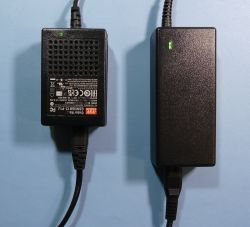
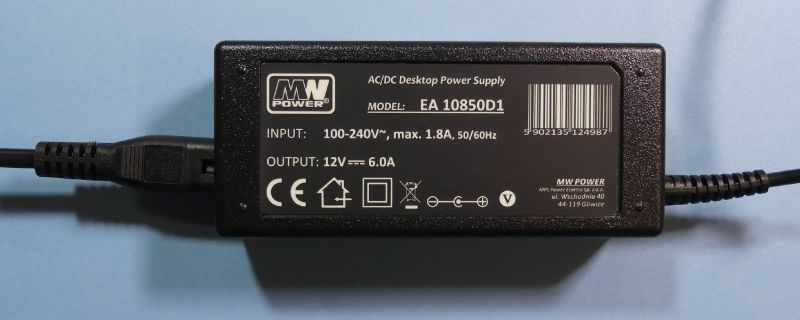
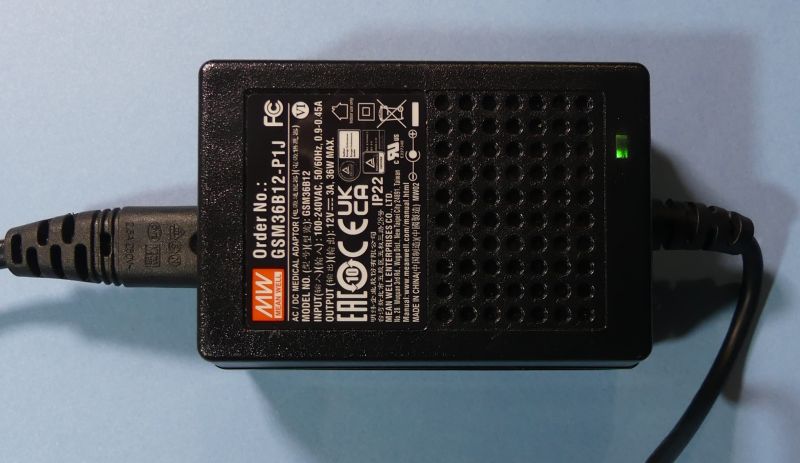

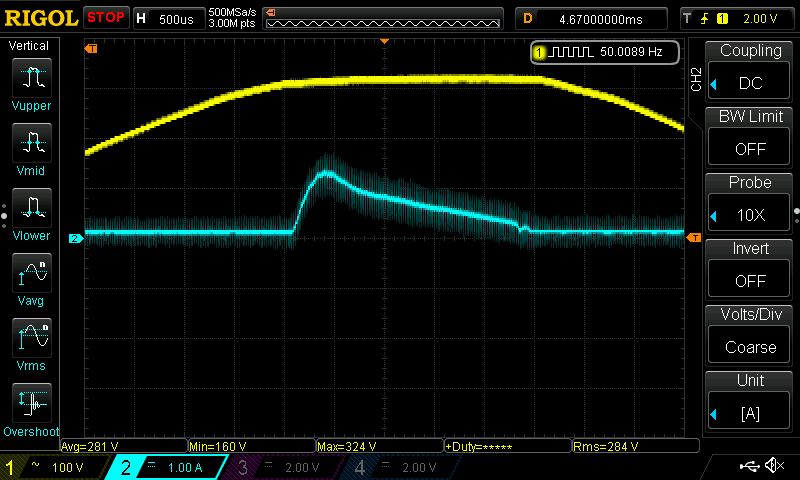
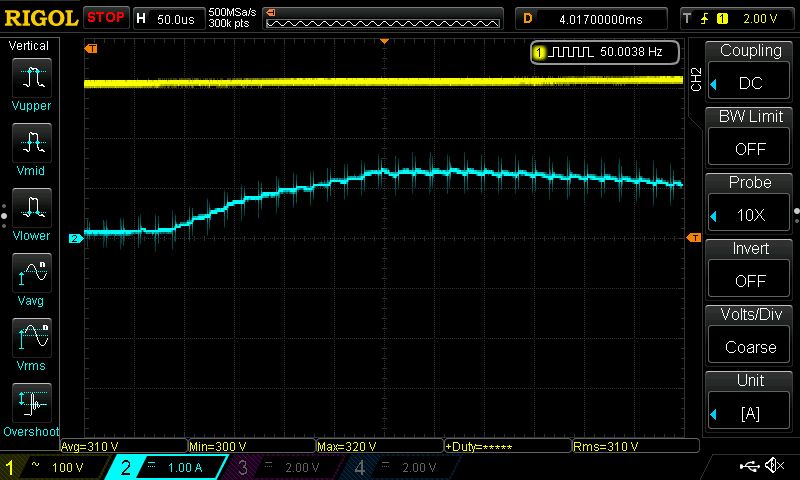
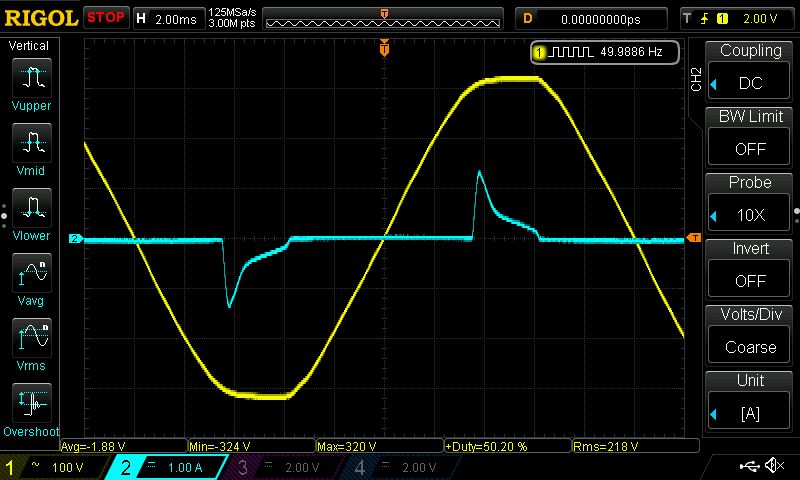
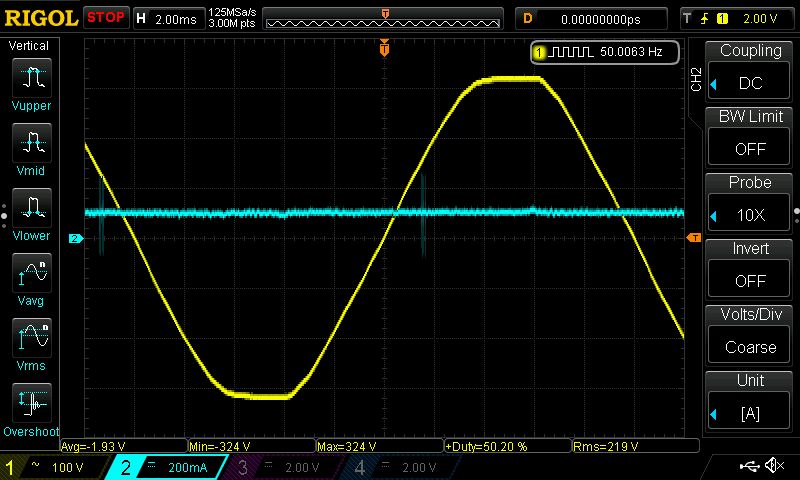

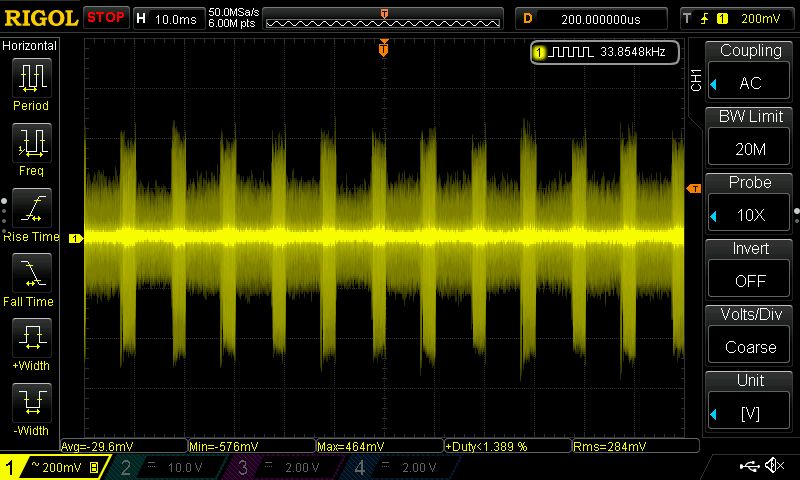
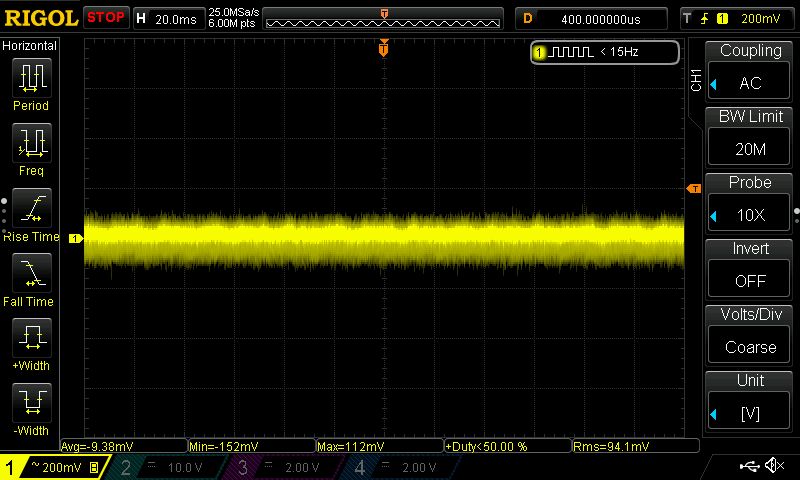
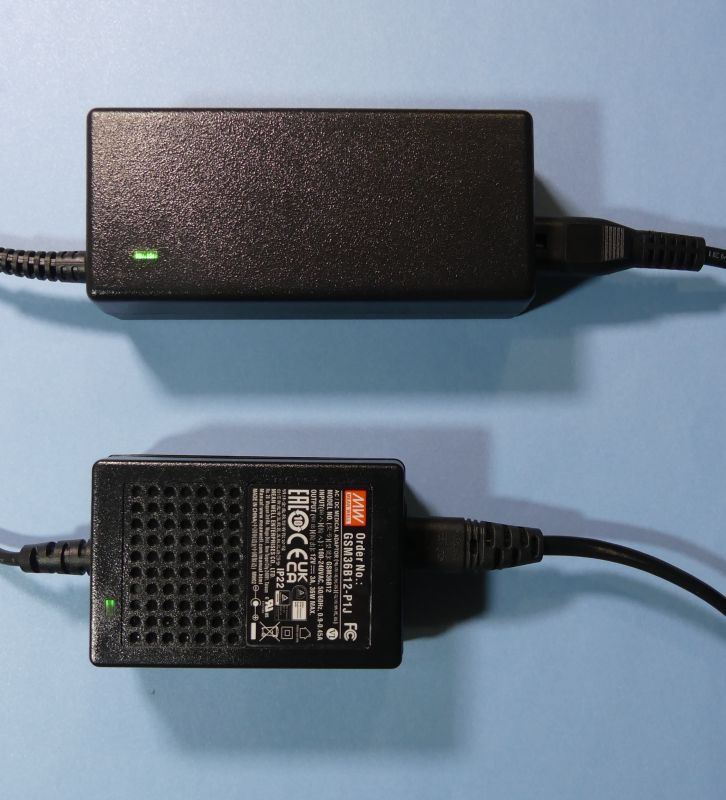
Comments
Article showing that: - A cheap power supply is worth g. - MW Power is not Mean Well (and I once encountered such a statement in an electronics shop) By the way, I like to buy power supplies from... [Read more]
Can such a PFC module exist as an external module connected from the 230V side? It is not always possible to replace the power supply. [Read more]
. But why? It is not the lack of PFC that makes noise and interference. The PFC itself also generates interference independently of the inverter. It's better to use a filter, except that it's live on... [Read more]
Hello, I had a very similar problem with an active TV antenna and a Mi scooter charger of type BCTA 71420-1791. Switching on the charger effectively disabled TV reception. Only moving the charger about... [Read more]
I put up a Christmas tree on Saturday. There is a router under it. Well, and the problem started with receiving TV using Wi-Fi when the Christmas tree lights up. [Read more]
Do they flicker? if so block them (there is a tips topic) and see if it helps :) . [Read more]
Not when they are on all the time because blinking makes me slightly nervous [Read more]
The manufacturer of such power supplies should be punished! This is unthinkable. How is a non-technical person supposed to function in this world, how is he supposed to know why a watch goes out of sync... [Read more]
@simon122 the question about active PFC in front of the PSU surprised me, it's usually a built-in module that increases the voltage on the capacitor already behind the PSU bridge. As external devices... [Read more]
. Especially since the PFC is sized/and designed for the specific power supply.... [Read more]
. But that doesn't mean at all that they are nicely sine powered, it could still be a triac that only starts from a certain sine voltage, we can't see it but the interference it generates. Only shorting... [Read more]
And such filters, either as stand-alone modules or integrated into the socket, can be bought without any problem: https://obrazki.elektroda.pl/1068740400_1733758196_thumb.jpg https://obrazki.elektroda.pl/3573199700_1733758196_thumb.jpg... [Read more]
DCF synchronised watches have the disadvantage that they do not continuously signal the quality of the signal reception and there is no chance of finding the optimum location for it. . . As far... [Read more]
. It is worthwhile selecting power supplies for themselves in terms of ripple and noise values at the output. Test under some kind of constant load. A standby test can also be useful. You can be really... [Read more]
If the inverters are able to interfere with UKF, BT and TV, then they are very bad. I've got some pads that interfere just like that. [Read more]
. Because such power supplies are built that way, class 2 protection, i.e. with double insulation, PE is unnecessary for them, only that then unfortunately they 'sow'. [Read more]
Good observation, in fact these power supplies do not have a PE connection, the C7 radio plug used is the so-called figure eight. [Read more]
. E.g. Panasonic heat pump - it sows all the way - I wonder how it is that they pass EMI/EMC approval? - I have a quandary here as the currents and powers require a non-trivial filter (30A). Another... [Read more]
DaoLong battery charger. Model YH-2120 - chaffs mainly PR1 on 225 kHz. When switched on it noises the radio in the other room beautifully. A charger that comes with a Zundapp bike. This one manages to... [Read more]